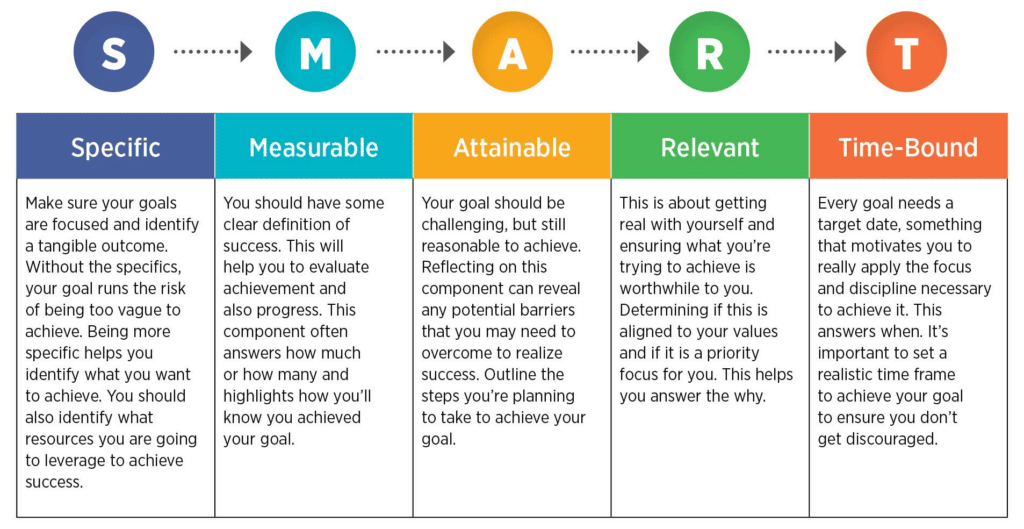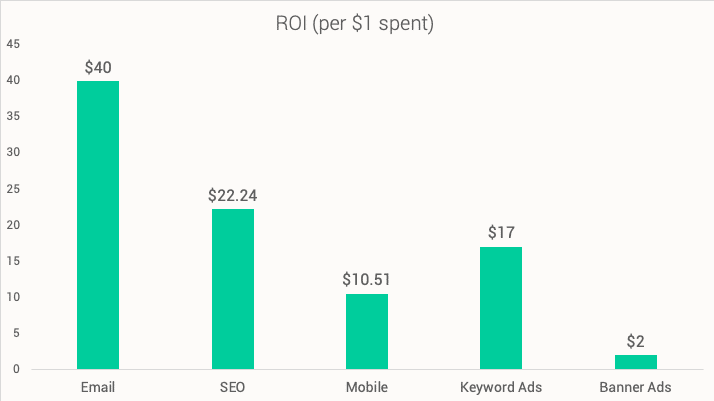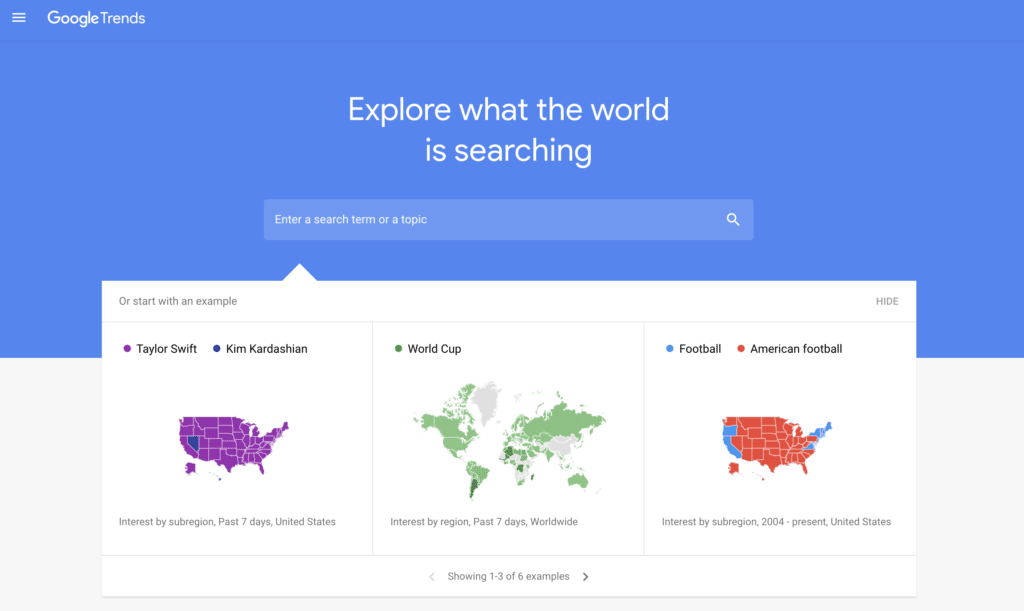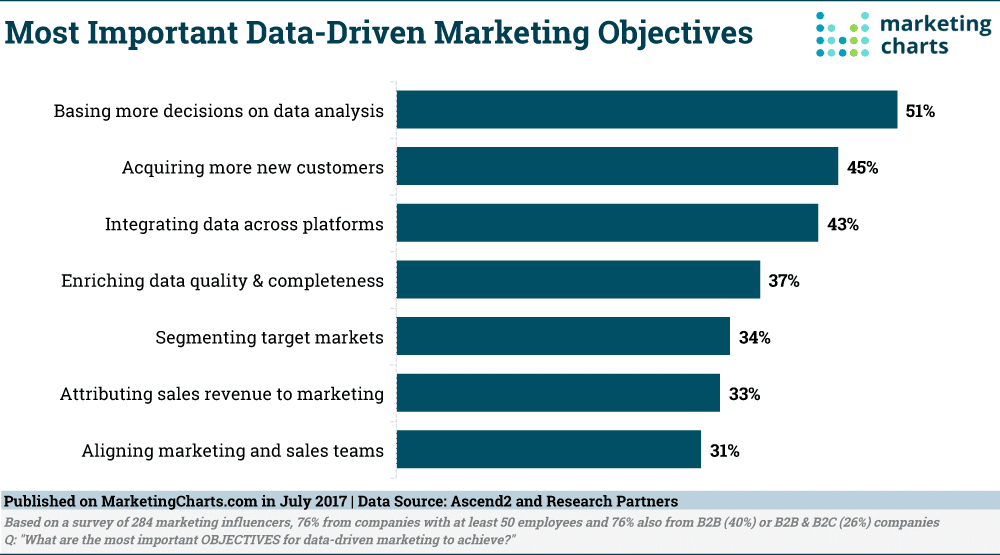Navigating the world of digital marketing for any business, especially small businesses (this includes you too, side hustlers), can feel overwhelming and time-consuming. Despite marketing initiatives being viewed as a never-ending list of tasks to implement, the gains that small businesses can make from doing it right can drive a ton of growth.
Let’s face it, 88% of small businesses struggle with cash flow, while 12% do just fine. What’s the biggest difference here?
Those who do not struggle with cash flow, according to the 2021 Small Business Marketing Report, is that they have a solid marketing plan laid out which consistently retains customers, brings in new customers, sets up appointments, etc.
I’m sure some of you might feel a bit skeptical that this report is way too biased about marketing, but to be clear, here’s what it states with how the information was collected to write it:
“Even Though It’s About Small Business Marketing, This Is Not A Small “Survey”
Through an extensive research project conducted over several years of working with 1000s of small business owners. Using a community survey, hundreds of interviews, and multiple third party researchers to compile and analyze data, the body of research presented is the result of a considerable effort that left no stone unturned.”
With that in mind, in today’s blog post, I’m going to highlight seven digital marketing tips that small businesses need to start doing now to sustain and scale growth goals.
What do small businesses want to focus on this year?
Despite the shitstorm that the pandemic brought on for some businesses, others thrived. This year, small businesses want to focus on growth.

So what exactly are the main reasons behind setting growth goals for small businesses? The same reason why people start on their path to becoming full-time entrepreneurs: freedom. The perk to this is also making a lot of money and not having a cap. But there really isn’t anything more liberating than running a business doing what you love, on your own terms, and also driving profitability.
Before we fully dive into today’s blog post, it’s important to understand that as a business owner you need to know which tools and resources you need to leverage in order to be successful. Here are some ideas:
- Automate where you can.
- Have a clear way to fish for new customers.
- Have a clear way to retain existing customers.
- Test your efforts so you know where you’re getting the biggest bang for your buck.
Tip #1: Set growth goals
The first step before you start executing anything is to make sure that you know exactly what it is you’re trying to achieve. That way, you won’t blindly go into investing in marketing initiatives that really have no KPIs (key performance indicators). The easiest way to go about doing this is to consider SMART Goals:

From there, you can then use your growth goals as a way to really map out how your implementations align, how you’ll measure success, and where you plan to allocate your marketing dollars.
Tip # 2: Push email marketing
One of the most effective ways you can stay in touch with current customers and prospects for new customers is email marketing. Plus, the ROI of email is so huge that it’s an absolute no-brainer to deploy.

Here are some email ideas you can do to drive more leads and sales:
- Provide incentives and exclusive offers.
- Position case studies with a clear CTA to get in touch with you.
- Highlight specific products, services, features, and benefits of your offerings.
- Send out blog posts, infographics, videos, and other content assets you develop.
Key to your email marketing success will be the platform you use. For small businesses, I like to recommend Ontraport because it is affordable and has many different capabilities, such as segmentation, automatic follow-up, spam scoring, and split testing. You can sign up for a free demo here.
If you’re looking for something a little more scalable, HubSpot is the way to go. While it’s a little pricier than Ontraport, it also has more features, like social media scheduling, a customer service hub, and more. Plus, their email marketing software is free, so there is no risk to try it out. Sign up for your free Hubspot account here.
Tip #3: Social media
It’s clear that if you don’t have any sort of a social media presence, you’re probably missing out on a tremendous opportunity to build awareness, drive traffic to your website, generate leads, and even sales. More importantly, social media is no longer what it was when it first became ‘a thing’. It is now about creating meaningful connections with your customers, which means you need to do more than just talk about yourself or your business.
Here are some reasons why social media is so vital for small business growth:
- There are 3.2 billion worldwide social media users.
- Every month, there are 1.65 billion active social media users worldwide.
- A third of Internet users research products & brands on social media.
- 50 million small businesses use Facebook to connect with customers.
- 90% of marketers say social media has increased their brand exposure.
- 73% of small businesses spend on social media marketing.
- 40% of small businesses rely on social media ads for revenue generation.
Next up, the important part here is to make sure that you align social media goals with the overall business objectives. From there, you can lay out a specific game plan to hold yourself accountable.

Try not to overthink the process of developing a roadmap that can help guide you through the daily, weekly, and monthly implementations for your social media strategy. Make the roadmap as simple and easy-to-follow as possible.
For starters consider the following:
- Who are you trying to reach?
- Where does your target audience spend most of their time online and with which social networks?
- What type of content do they consume the most?
- How can you be a part of the conversations they are having online?
- How will you map out your social media content with your marketing funnel so that you know which updates are more for awareness, and which are more for lead generation or sales?
- Which tools will you use to help with monitoring your brand online?
- Which tools will you use to track and measure your success?
(Read a previous post here on How to Develop a Successful Social Media Strategy)
Tip #4: Blog consistently
With everything you do, content needs to be a top priority because it’s going to be the vehicle you use to engage with customers and even just getting your business out there in front of the right people. One of the most low-cost and effective ways to go about developing fresh, evergreen content regularly is to blog.
Check out these key strategies and tactics I shared in a previous blog post:
1. Choose the Right Topics
One of the biggest conundrums in blogging is understanding why some topics get all the attention and others are left to rot. It’s not always obvious on the surface when a topic is going to bring in the traffic. If you end up selecting a topic that no one else is interested in, you’re not going to get the traffic you want, no matter how well written your content is.
Knowing what your audience is looking for can be digital gold for a blogger, so take advantage of research tools that can give you the inside scoop on what matters to your readers.
You can use tools like SEMRush, BuzzSumo, and Google Trends to detect trending topics in a particular niche or industry and tailor your ideas to those trends. These tools look at things like Google searches, social shares, and other data-driven indicators that take the guesswork out of selecting topics.

Once you know what people are already searching for, it’s 1000 times easier to know what you should write about.
It’s like having blog traffic handed to you on a silver platter – get ready to dig in.
2. Develop a Posting Schedule
Successful blogging depends on consistency. Those who visit your website and want to return will also want to know when new content will be published. If they keep visiting your website and you have nothing new to offer, they’ll stop coming altogether.
Though it can be disheartening to think your blog isn’t working, don’t stop! It can take months before seeing any form of ROI. The best thing you can do is decide how often you want to post and STICK TO IT!
Blog schedules range from daily to weekly to biweekly to monthly, or something in between. Choose a schedule that makes sense for your industry and audience, then make your best efforts to stick with the plan.
3. Invest in Keyword Research
Though your writing should cater to your human readers, you’ll also need to take algorithms into account. Search engines rely on a number of factors to determine where your content will land in the rankings. One major component: keywords.
Keywords are the terms that people type into search engines to find content. When your blog post contains the keywords people are actively searching for, you’ll have a greater chance of positioning your content in their search results.
So, how do you go about finding high-traffic keywords?
You’ve got several options:
- Keyword Tools. First, you can invest in high-end keyword tools like the keyword magic tool on SEMRush. You can see the number of monthly searches for a specific term, the level of difficulty for ranking for that term, and who’s ranking well for that term, among other data. Stick with keywords that have high traffic (at least 100 searches per month) and low difficulty (10 or less) to maximize your efforts.
- Long-Tail Keywords. Long-tail keywords are becoming increasingly important in SEO. These are longer search phrases than the typical keyword (example: ranch dressing vs. where to buy ranch dressing) and offer more insight into user intent. In our example, a search for “ranch dressing” could pertain to ingredients, recipes, history, or other aspects. But the long-tail keyword “where to buy ranch dressing” is a specific query that indicates a readiness to buy. This is more likely to direct to an e-commerce store where you can buy ranch dressing rather than a website offering recipes or a history. You can use the aforementioned keyword tools to find long-tail keywords, or simply start typing a search into Google and see what auto-fills. Google will make suggestions based on previous searches, giving you the inside scoop on what others are looking for.
- Competitor Research. Want to beat out your competitors? It helps to know what they’re ranking for so you can come back with a bigger, better blog post. SEMRush has a free competitor analysis tool that you can use to analyze what keywords your competitors are ranking for. You can either choose to use those keywords for new blog posts or identify a keyword that your competitors are ignoring that you can leverage. Use SEMRush’s free competitor analysis tool here.
4. Write Content Round-Ups
Round-up posts can be an effective way to tap into multiple audiences at the same time. You’ve likely seen product or expert round-ups that contain a number of different ideas, pieces of advice, or other information within the same post. Each of the items in the post is a potential new audience for you to get in front of.
For example, if your blog is about human resources, you might do a round-up featuring 18 HR executives and their best advice for onboarding. If you’re an Amazon affiliate, you might do a product round-up of the 10 best organic mattresses.
Each of the brands or people featured might be willing to share your post in their media outreach, giving you more exposure and driving more organic traffic to your blog. Plus, it can net you some high-quality backlinks from the content partners you featured in your blog post.
5. Double Down on Pillar Articles
Pillar articles are long-form, comprehensive articles that focus on a variety of subtopics related to a core subject, or pillar. This is a different approach than most blogs take, which is writing shorter articles on similar topics.

5. Develop an Editorial Calendar
Editorial calendars not only help you manage your publishing schedule but can also help you identify new opportunities to grow your following.
Use your calendar to prioritize and time your blog post ideas. Most of us come up with so many topics we lose count and may give up because we’re overwhelmed. Laying out our ideas in an easily digestible format can help us time our posts to maximize engagement.
Many content marketers use this strategy to plan for seasonal content. As new events enter your radar, you can consult with your calendar to tailor your content strategy and maintain relevance to your audience.
6. Write Great Headlines
Never underestimate the value of a great headline. Studies show that 8 out of 10 users will read the headline and decide whether or not to click through to your content.
Think of your headline as the first impression: if it doesn’t relay what the user is looking for, then they’re likely not going to click on your article.
Headlines should be short and catchy, but also informative to set the right expectations for the reader. It’s not just about creative wording and humor. Our best advice is to let the creativity happen when it happens, but try not to force it. It’s more important to deliver a clear, honest headline rather than come up with something fun but vague.
7. Pay for Ads
Organic traffic is every blogger’s dream, but if you’re just not getting the numbers you need, it might be worthwhile to explore paid advertising opportunities to jumpstart your fanbase.
Social media platforms like Facebook are among the most popular and inexpensive methods of advertising. You can set your budget and adjust as needed, plus you can tailor your audience preferences so that only your target users are seeing your ads.
Eventually, you may be able to pull out of paid ads altogether as word starts to spread about how awesome your blog is.
Tip #5: SEO
The term SEO (search engine optimization) was coined way back in 1995 when Bob Heyman and Leland Harden discovered a way to boost a website’s rank to number one on Google. Back then, it was as simple as stuffing the site with as many keywords as possible.
Today, it isn’t that simple. Google’s main goal is to deliver relevant content to satisfy searchers’ needs. This means a lot of factors (including quality content and website design) play a pivotal role in boosting SEO ranking.
So, exactly what is SEO? Simply put, it’s optimizing your website so that you get more high-quality traffic. It’s showing Google that you are the best choice for people searching for certain topics online. You are the one who can answer their questions and give them what they need.
Sound easy? It’s not. But SEO, when done right, will give you results you can’t get from other forms of marketing.
As I highlighted in a previous blog post, SEO for Beginners, here are reasons why small businesses should do SEO and capitalize on its benefits:
SEO Provides Residual Value
With PPC ads, what you pay for is what you get. Once a user clicks on your ad, you open your wallet. And when you stop paying for ads, you no longer get clicks and traffic to your site.
SEO is different. Its value builds over time. Of course, you won’t experience the same fast results as you do with PPC ads. You need time to build a good website, create quality content, and learn the ropes of effective SEO practices. But once your site is optimized well for search engines, you’ll continue to gain traffic without spending any more time or money. With evergreen content and a website focused on user experience, your brand will experience growth through constant organic traffic to your site.
Use Keywords to Beat Your Competition
Keeping an eye on your competitors will help you rank better online. It’s important to remember that Google will pay attention to metrics like how long users spend on your site, how many links they click, and whether they scroll down to the very bottom of your pages.
This means having content that’s better than your competitors’ will help you rank well in the long run. To spy on your competitors, type your focus keyword into Google. Then, check out the first five sites that appear. These are the five sites that rank highest for your keyword.
Go over the content of each one of these sites. Is it good? Comprehensive? Is there anything missing that readers would like to know? How can you improve on it? Your goal is to write something better than the content ranked top five for a keyword on Google.
Tip #6: Run social ads
One of the quickest ways to get your business in front of the right people who have a higher potential to actually buy from you is to run social media ads. The other great thing about social ads is that they are cost-effective for the most part. In other words, if you put in the due diligence to figure out how to position the right offerings and messaging while developing ad creatives that will actually convert, then you’ll see an influx of new leads as well as sales.
The thing about social ads is that you can test out a lot of different CTAs (call-to-action) and messages until you hit one that actually works with converting a click to an actual engaged prospect or potential customer.
In order to reap the benefits of social media advertising and yielding a positive ROI, you must do the following:
- Don’t get lazy. Ad fatigue is a real thing.
- Test as much as you possibly can. If you need to develop 20 to even 100 different ad variations, do it. This is all for the growth of your business.
- Put the right tracking in place so you know which ad each click, lead, and sale comes from.
- Optimize every day. Don’t let your ads run on cruise control because you’ll blow through your budget.
Tip #7: Analytics and reporting
All of your efforts won’t mean anything if you can collect data points to figure out what is working and what isn’t. This is the most important aspect of marketing — to have a deep analytical understanding of how your efforts are impacting your business. The best way to affirm your intuition is to also have data back it up. You’ll then start making better decisions that will scale your business and take out the guesswork.

More specifically, know the stats:
- 88% of marketers surveyed by Forbes use data obtained by third parties to enhance their understanding of each customer.
- 66% of marketing data is used to better focus on targeting offers, messages, and content.
- Companies that adopt data-driven marketing are more likely to have an advantage over the competition and increase profitability. In fact, they are six times more likely to be profitable year-over-year.
- 52% of consumers (and 65% of B2B buyers) say they’re likely to switch brands if a company doesn’t personalize communications to them.
Wrapping it up
Small businesses have to take marketing more seriously and understand that it is an integral aspect of their overall growth strategy. In order to truly scale and even sustain current customers, you need to make marketing a top priority so that you’re not just scrambling last minute to figure out what you need to do the next time you face cash flow challenges.
Having a clear and solid marketing plan in place means that you’re going to invest in making sure that existing/potential customers continue to follow you, want to hear from, and ultimately, buy from you. Properly marketing your small business is not about one-off project tasks that you check off, but making sure it is a daily part of your business practice. This means your short-term and long-term wins will steadily rise.
Disclosure: Please note that some of the links above are affiliate links. I only recommend products and services that I use and stand behind, and if you decide to try them, I will earn a commission at no cost to you. Doing so helps me run this blog and provide free content for you, my readers.
